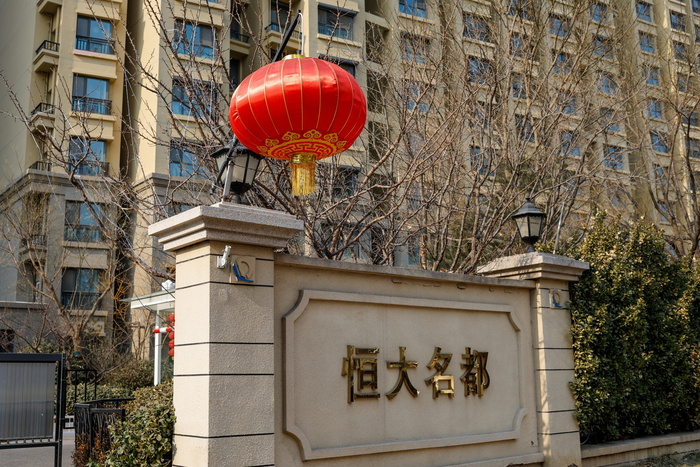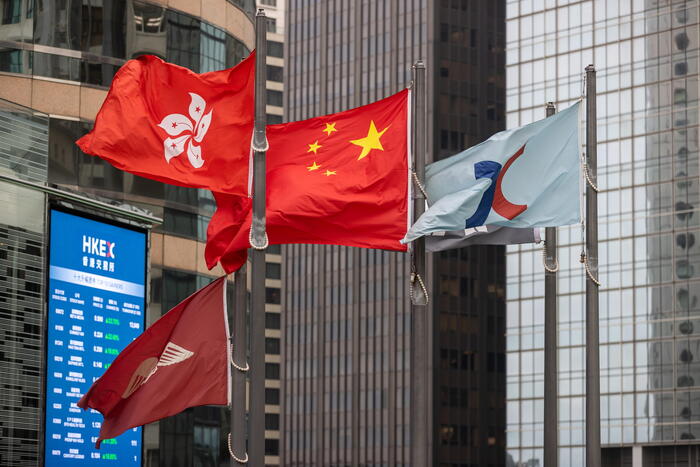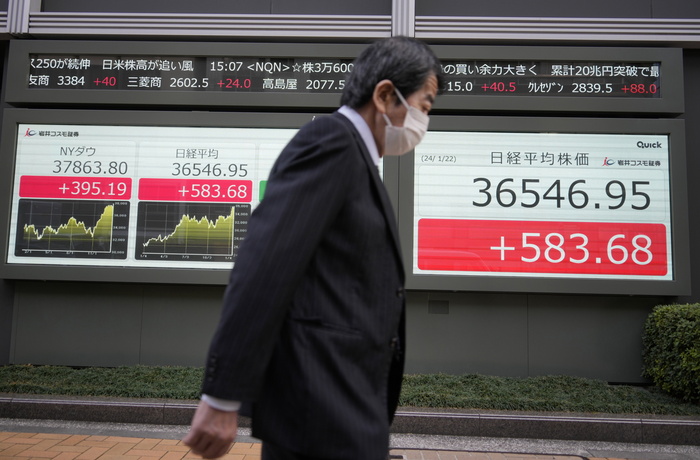01 Investigation
Written by: Bo Li
2019-12-19 07:01
Last updated: 2019-12-19 07:01Hong Kong-Shenzhen border reappears controversy! Following the earlier announcement of the "random gate" at the border and the seizure of official land by Hong Kong, "Hong Kong 01" found that the forthcoming opening of the new port of the Liantang Xiangyuanwei Port, four private farmlands were suspected of falling into Shenzhen.
The geographic information map of the Hong Kong Government shows that the farmland involved spans the Shenzhen River between the Hong Kong and Shenzhen borders, and aerial photos show that the farmland was suspected of being removed from Hong Kong in the late 1980s. The owner twice asked the North District Lands Office for help, and the prescription refused to confirm the location of the farmland.
A spokesman for the Lands Department did not confirm whether the agricultural land still belongs to Hong Kong, and said that the aerial photos in the early years "may have been wronged by the people." Some members of the Legislative Council believe that the Hong Kong Government has the responsibility to clarify the boundary, and if there is land loss, it must discuss compensation with the Shenzhen government.
The Hong Kong Government's geographic information map shows that four private plots of land located along the border fell out of Hong Kong. (Geographic Information Map)
The farmland in question and the forthcoming Xiangyuanwei port are only about one kilometer apart. (01 drawing)
6500 ft east of Hongyuan Port, Hong Kong registered agricultural land in Shenzhen
The Liantang Xiangyuanwei Port will be opened as soon as the end of this month. The reporter found in the Hong Kong Government Geographical Information Map that there are four private farmlands with a total area of about 12,000 feet across the Shenzhen River in the Baihushan area of Daguling, about one kilometer east of the new port. To the north), it overlaps with the large-scale housing estate "Lianlian Yicun" in Luohu District, Shenzhen.
All four agricultural lands were registered in Hong Kong, and "Hong Kong 01" found Mr. Ye, the owner of two of the lands, based on the search data. He said that the agricultural land was left by Taigong. In recent years, he found that some of them were excluded from Hong Kong when he checked the map. Up. "
Mr. Ye went to the North District Lands Office for help twice in April 2018 and March 2019, but the prescription refused to assist him in confirming whether the agricultural land is currently in Hong Kong (see separate draft).
(Hong Kong 01 drawing)
1905 official deed states that it belongs to the rice field
The lot numbers of the farmland involved are No. 457, 458, 459, and 461 of the 80th section of the survey. The reporter checked the collective official deed of 1905 and found that the four areas registered at that time ranged from 0.03 acres (1,306 feet) to 0.12 acres (5,227 feet).
1945 Hong Kong Government aviation picture showing farmland in Hong Kong. The British and Hong Kong governments built border fences in the 1960s, and did not reclaim the farmland involved. However, aerial photographs of the Lands Department from 1986 to 1991 show that more than 400,000 acres of land originally belonging to Hong Kong in Daguling White Tiger Mountain were painted white. Four agricultural lands involved were suspected to have fallen into Shenzhen since then.
The reporter invited Huang Yaozu, vice chairman of the Land Surveying Group of the Institute of Surveyors, to help analyze the maps of the Hong Kong government in different periods. He determined that the four farmlands were originally located south of the Shenzhen River and belonged to the Hong Kong area. In addition, it is in an awkward position. "It is unclear whether it belongs to Shenzhen or Hong Kong.
After the British occupation of the New Territories, from 1899 to 1902, Indian surveyors were sent to survey and number the land in the New Territories. The survey results were published in the Collective Crown Lease in 1905. "Hong Kong 01" consulted the collective official deed of DD80 and found that the lot involved (shown in yellow box) was recorded at the time. (Screenshot of Collective Official Deed)
Declassified archives reveals dispute over Hushan boundary
The reporter checked the public information before the reunification and found no record of the British Hong Kong government's land falling into Shenzhen, but found three declassified archives of the Hong Kong government classified as "Confidential" in the historical archives, mentioning the 1980s It was found that a section of the Shenzhen River near the farmland involved moved northward, and China and Britain had differences on the border.
The document mentioned that after the Hong Kong government discovered that the Shenzhen River near Baihu Mountain moved north, the government internally discussed whether to use the river in 1981 as the new boundary line, for fear of causing disputes with the Chinese government. The Hong Kong Government also sought legal advice. The last document showed that the then Secretary of Security stated that the British Foreign Office had agreed to demarcate the old river channel of 1905 and proceeded to modify the government map.
It is worth mentioning that, according to the collective official deed of 1905, the four agricultural lands involved belonged to Hong Kong. The British government of Hong Kong took the old river channel in 1905 as the boundary, but the agricultural land involved was removed from Hong Kong. What is the reason for this? The reporter did not find the answer in the decrypted file.
Huang Yaozu, deputy chairman of the Land Surveying Group of the Hong Kong Institute of Surveyors, comprehensively analyzed the Hong Kong government maps from different periods to determine that the four sites originally belonged to the boundary of Hong Kong. (Photo by Cen Zhuo)
Lands Department: Lots of land may be wrong
Since the reunification, the SAR Government has not dealt with the ownership of these agricultural lands. In 2011, due to the second phase of the reconstruction of the border rail network, the Hong Kong Government requisitioned 84,000 square feet of private agricultural land between the Indus River and Lianmakeng Section, including two nearby sections. Only the agricultural land involved was not handled.
"Hong Kong 01" inquired the Lands Department. The spokesman responded that whether the lot in question had been outside Hong Kong's territory or not, detailed land surveys could not be judged solely on map products. Until then, no assumptions should be made.
The Department also stated that, regardless of past history, the regional boundary of the Hong Kong Special Administrative Region after July 1, 1997 should be stated in accordance with the order of the State Council. According to the department's records, the boundary near the lot in question has not changed so far. Therefore, whether the lot is located in Hong Kong should reflect the situation on the day the State Council order came into effect, and the situation has not changed.
As for the aerial photos in the early years, the areas involved were whitewashed. The Department stated that the whitewashing process was handled by hand. "In the past, there may have been mistakes by the people." The Department is reviewing the procedures for whitewashing to avoid errors as much as possible. Misunderstanding.
Looking at the aerial maps of the Lands Department, it can be seen that from 1986 to 1991, a large area of land along the White Tiger Mountain border was whitened out of Hong Kong. (01 drawing)
[Boundary land suspected to fall in Shenzhen] Landlord twice asked for help
Tu Jinshen: Need to Investigate Land Loss in Hong Kong
Former Vice-Chairman of the Legislative Council Security Committee, Tu Jinshen, believes that border delimitation is a government action. "The land was originally yours. Suddenly a line (boundary) was drawn and it was not yours, so two governments should discuss it." He suggested that the authorities conduct a thorough review of government records, check Hong Kong for other land losses, and discuss compensation with Shenzhen. "If there is no (record), it is negligence."
Surveyor: Can be compensated with another land
According to Lai Baozhen, a professor of geography at the University of Hong Kong, many countries and regions are bordered by rivers, and border disputes caused by river changes are endless. "Not even the World Court can handle it." She believes that the resolution of such issues must be negotiated by the governments of both sides to seek consensus.
Huang Yaozu pointed out that the four sites involved are currently in an awkward position, and the owner's rights may be more difficult to claim. He believes that the Hong Kong Government can use the "missing lot" mechanism. According to this mechanism, when the specific location of a lot cannot be established, the government may consider using the same area of land in the same area as compensation.
[Border gap] Mysterious villagers "free door" leads directly to Hong Kong Tu Jinshen: Shenzhen should be urged to close
[Border gap] Hong Kong-Shenzhen border now has "free gate" Villagers illegally cross-border Hong Kong government: will understand
[Border Frontier Force Occupies Hong Kong Land] Hong Kong and Shenzhen Use Shenzhen River as the Boundary
Border Guard Land and Land Administration: Lands belong to Hong Kong
Hong Kong-Shenzhen Border Liantang Port Border Restricted Area Lands Administration Office







